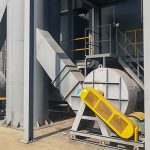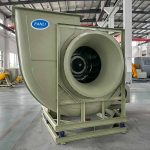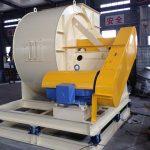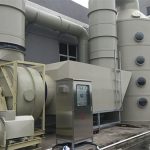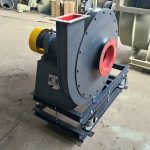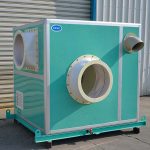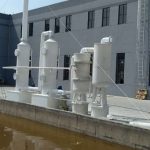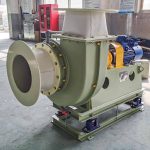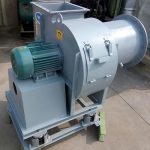What is a Fiberglass Fan and How Does It Work?
In modern industry, efficient ventilation and air movement are critical not only for comfort but also for worker safety, process control, and environmental compliance. As industries increasingly prioritize durability, corrosion resistance, and sustainability, fiberglass fans have emerged as a vital solution in demanding environments. These fans are widely used in chemical plants, wastewater treatment facilities, laboratories, and other applications where conventional materials such as steel or aluminum might quickly degrade. To understand their importance, let us examine what a fiberglass fan is, its construction, and how it functions.
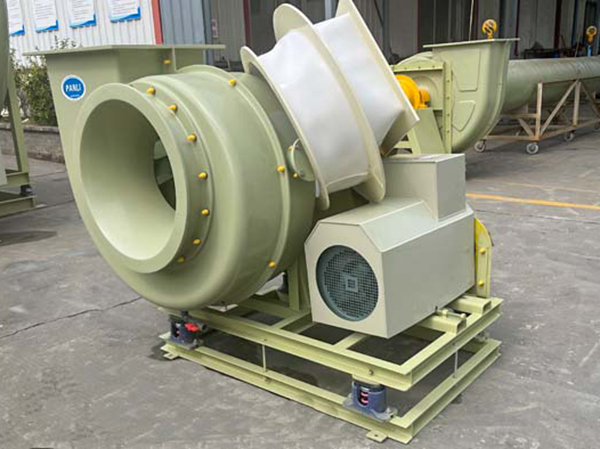
Defining a Fiberglass Fan
A fiberglass fan is an industrial-grade ventilation device manufactured primarily from fiberglass-reinforced plastic (FRP). Fiberglass, a composite material consisting of fine glass fibers embedded in a resin matrix, is known for its exceptional combination of strength, corrosion resistance, and lightweight properties. When used in fan manufacturing, FRP creates housings, impellers, and casings that can withstand corrosive gases, humidity, and harsh chemicals far better than traditional metals.
Unlike standard fans used for residential or commercial ventilation, fiberglass fans are specifically engineered for industrial and corrosive atmospheres. For example, where stainless steel might corrode in the presence of chlorine or acidic vapors, fiberglass retains its integrity, offering longer service life and lower maintenance requirements.
Key Components of a Fiberglass Fan
Although the external casing is made of FRP, a fiberglass fan still incorporates several essential components:
Housing (Casing)
The outer shell of the fan is molded from fiberglass, designed to contain airflow and protect internal components. The housing may be cylindrical, scroll-shaped (in centrifugal designs), or axial tube-shaped, depending on the fan type.
Impeller (Fan Wheel or Blades)
The impeller, also often made of fiberglass or coated with protective layers, is the rotating component that imparts energy to the air. Impellers vary in design:
Axial impellers move air parallel to the shaft, suitable for high-volume, low-pressure applications.
Centrifugal impellers expel air radially, generating higher pressures for ducted systems.
Shaft and Bearings
These metallic components are typically isolated or coated to prevent exposure to corrosive air streams.
Motor and Drive System
A fiberglass fan can be direct-drive, where the motor shaft is directly connected to the impeller, or belt-drive, where pulleys and belts provide speed flexibility. Motors are usually mounted outside the corrosive airflow path for extended protection.
Accessories
Depending on the installation, accessories such as silencers, dampers, or spark-resistant features may be integrated.
How a Fiberglass Fan Works
The operation principle of a fiberglass fan is based on the same aerodynamic fundamentals as other industrial fans: converting mechanical energy into air movement. The difference lies in the materials used and the environments in which these fans excel.
Energy Input
An electric motor provides rotational energy to the impeller. In direct-drive systems, the motor shaft spins the impeller directly. In belt-drive systems, belts and pulleys adjust the rotation speed.
Air Induction
As the impeller rotates, air is drawn into the fan inlet. The specific path depends on the fan type:
In axial fiberglass fans, the impeller blades push air along the axis of rotation, creating a flow similar to that of a propeller.
In centrifugal fiberglass fans, the impeller flings air outward by centrifugal force, converting velocity energy into pressure energy inside the scroll-shaped housing.
Airflow Acceleration and Pressure Generation
The impeller blades are aerodynamically designed to increase air velocity. In centrifugal fans, the scroll housing then converts this velocity into static pressure, making them ideal for ducted or resistance-heavy systems.
Air Discharge
Finally, the accelerated air exits the fan housing into ducts, ventilation systems, or directly into the atmosphere, depending on the intended application.
The efficiency of this process depends on blade design, motor selection, and the aerodynamic properties of the housing. Importantly, fiberglass construction ensures that this process continues reliably even when the airflow contains corrosive vapors or particulate contaminants.
Applications of Fiberglass Fans
Because of their unique material properties, fiberglass fans are used in environments where conventional fans would fail prematurely. Typical applications include:
- Chemical Processing Plants – Handling fumes from acids, solvents, and reactive gases.
- Wastewater Treatment Facilities – Controlling odors and venting corrosive hydrogen sulfide vapors.
- Pulp and Paper Mills – Withstanding humid, acidic environments.
- Laboratories and Fume Exhaust Systems – Safely removing harmful vapors.
- Marine and Coastal Installations – Resisting salt-laden air that corrodes metal equipment.
In each case, fiberglass fans provide not only performance but also lower lifecycle costs due to reduced maintenance and longer service life.
Advantages of Fiberglass Fans
- Corrosion Resistance: The most significant advantage, making them indispensable in chemical and humid environments.
- Lightweight Strength: Easier handling and installation compared to all-metal fans of equivalent size.
- Durability: Long service life with minimal performance degradation.
- Customization: Fiberglass can be molded into various shapes, allowing for specialized aerodynamic designs.
- Eco-Friendly Option: By extending service life and reducing the frequency of replacements, fiberglass fans contribute to more sustainable industrial operations.
Conclusion
A fiberglass fan is an industrial ventilation solution built from fiberglass-reinforced plastic, specifically designed for corrosive and demanding environments. It works by transferring energy from a motor-driven impeller to the surrounding air, either moving it along the axis (axial fans) or outward radially (centrifugal fans). The fiberglass construction ensures durability, corrosion resistance, and efficiency where metal fans would quickly fail. As industries prioritize sustainability and reliability, fiberglass fans stand out as a practical and eco-friendly choice for long-term air handling and exhaust needs.

